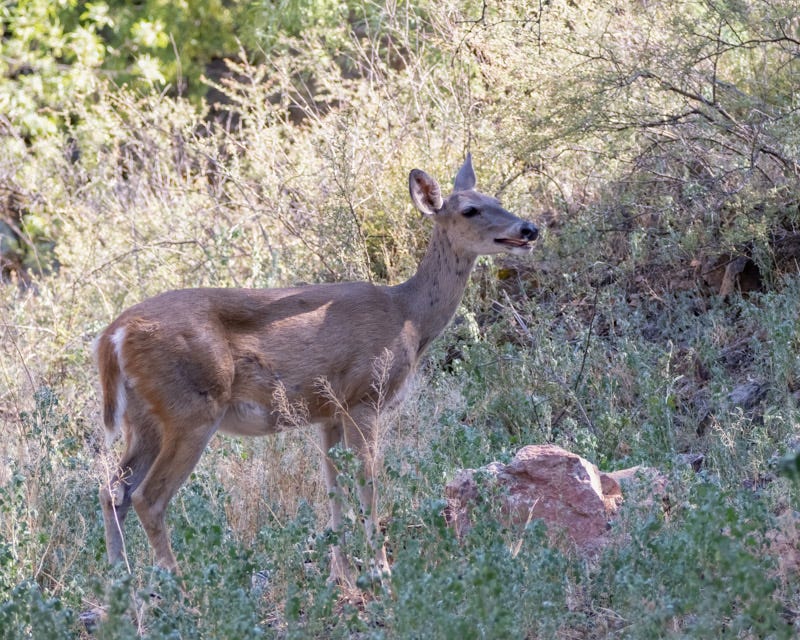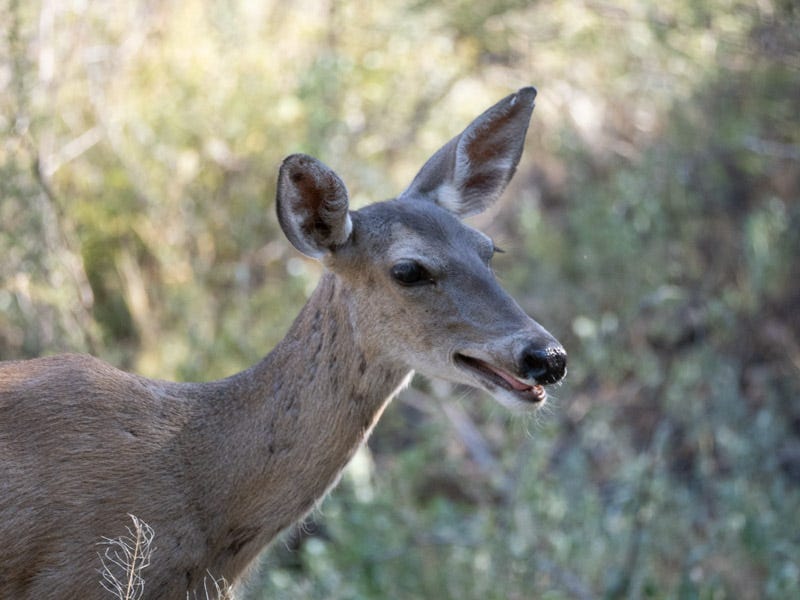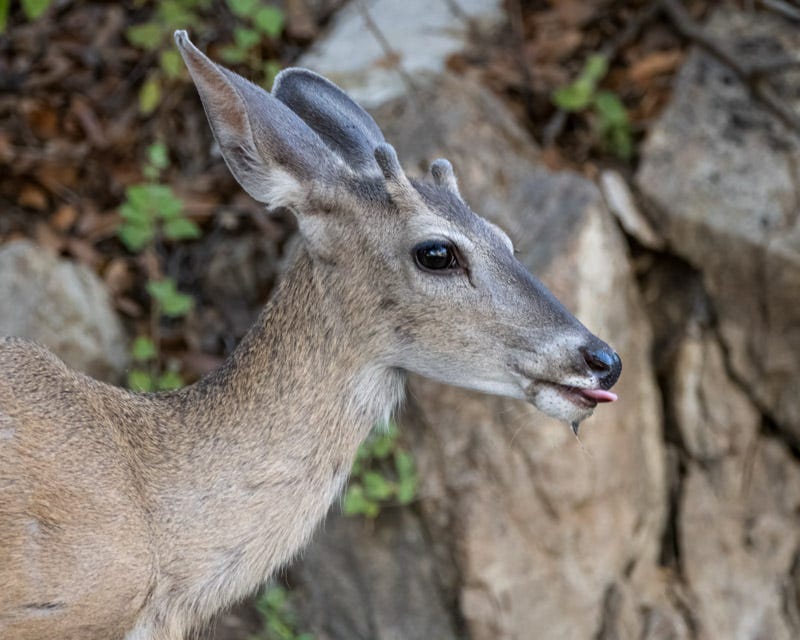Deer Me
Aug. 3: A nice surprise at a desert water hole
When we were sitting at the water hole at the base of the Santa Rita Mountains, a pair of Coues White-tailed Deer approached. They walked down the dry creek bed towards us and stopped about 10-15 yards away. I am certain they had been observing us for a while but they seemed to want to test us at that close range. After a minute or so, they move out of the creek bed and onto the slope along the creek.
They paused to watch our reaction. The three of us had remained frozen in our seats, not wanting to make any move that would spook the deer. We each did, however, slowly raise our cameras into position. The doe was in the lead. For more on Coues Deer, read an old piece for the Sabino Canyon Naturalists by Ned Harris: https://sabinonaturalists.org/critters/white-tailed-deer/
After a very long minute, the two deer proceeded to walk along the creek's edge to reach the water hole. That's the same spot that that was used by all of the birds we had been watching. Here the young buck stopped to check us out before dipping his head to drink.
After a long drink by both deer, the female left first while the male continued to drink. He finally raised his head, licking his lips while water dripped off his chin. Coues Deer are a small subspecies of White-tailed Deer. They were named after Elliot Coues in the 1860's. He was a naturalist and Army physician who was stationed in Arizona at that time. He pronounced his name as "cows" but, over the years, "cooz" has become the preferred pronunciation for these deer.
Cold water tastes so good on a hot summer day, doesn't it? This male is beginning to grow his winter antlers. They are alive as they grow, covered with skin and fur that is referred to as "velvet". Once the antlers are fully grown and have hardened into bone, the velvet will drop off.
The deer turned, looked back once more and then quickly moved up the slope to join its partner. For more on the Coues Deer, see https://azstateparks.com/coues-deer
It was a magical moment.







